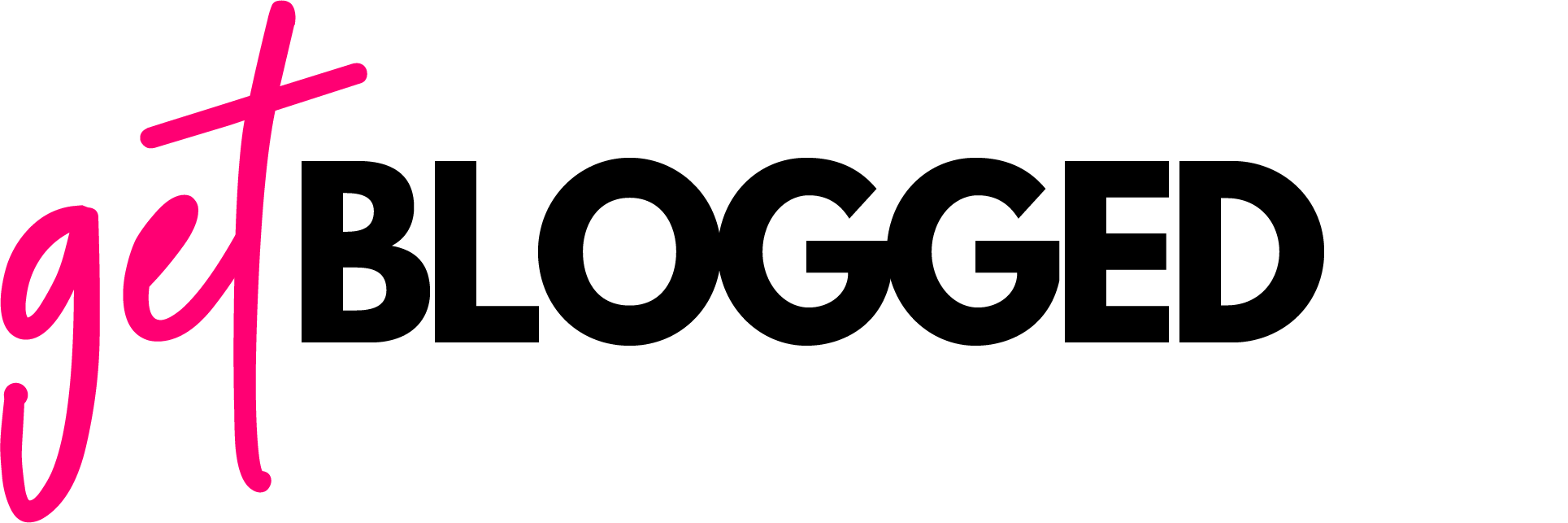Link building today is about more than just getting backlinks. It’s about building meaningful, authentic connections that add value to your brand. With AI-powered search engines becoming smarter, the standards for what makes a “good” link have never been higher.
But let’s face it: not all websites are created equal. Some are run by passionate publishers who pour their heart into their work, while others are low-quality setups designed to game the system. If you don’t have a solid vetting process, you risk associating your brand with sites that could harm your SEO efforts, or worse, your reputation.
At Get Blogged, we’ve built a self-service blogger outreach platform that prioritises transparency and quality. We help brands work with genuine bloggers who care deeply about their niches and create content that resonates with their audiences. No PBNs, no link farms, no shortcuts, just real people doing great work.
In this guide, I’ll share 23 red flags and signs to watch for when selecting sites for link building, plus a bonus tip about AI-generated content. These checks will help you ensure your link-building efforts are effective, authentic, and future-proof.
And here’s the thing: no single red flag is necessarily a dealbreaker. But if you spot multiple issues, it’s probably time to move on.
Let’s dive in.
Table of Contents
- 23 Ways to Spot Bad Sites for Link Building
- 1. The URL Doesn’t Align with the Niche (or Makes No Sense)
- 2. Metrics Show Inconsistent Data Across Tools
- 3. The Site is Overloaded with Ads
- 4. Overuse of Stock Photos
- 5. No Social Media Presence
- 6. Minimal Contact Information
- 7. Every Post is Sponsored Content
- 8. The Content Covers Too Many Unrelated Topics
- 9. Irrelevant Sidebar and Footer Links
- 10. Mentions of Being a Directory or Accepting Article Submissions
- 11. No Privacy Policy or Legal Pages
- 12. Your Gut Feeling Says “No”
- 13. The Content is Poorly Written or Full of Errors
- 14. The Site Has No Clear Audience or Purpose
- 15. The Site’s Traffic is Unnatural or Inconsistent
- 16. The Site is Over-Optimised for SEO
- 17. The Site Has a High Bounce Rate
- 18. The Site is Full of Broken Links
- 19. The Site’s Design is Outdated or Unprofessional
- 20. The Site Has a History of Penalties
- 21. The Site’s Content is Duplicated Elsewhere
- 22. The Site’s Backlink Profile is Suspicious
- 23. The Site Lacks Fresh Content
- Should you Beware of AI-Generated Content?
- Here’s to Authentic Partnerships
23 Ways to Spot Bad Sites for Link Building

1. The URL Doesn’t Align with the Niche (or Makes No Sense)
A website’s URL is often the first clue about its authenticity. While creative or quirky domain names can be fun, a URL that feels completely disconnected from the site’s content is a red flag.
For example, if you’re looking at a site about healthy recipes, but the domain is something like “bestcarloans247.com,” it’s worth pausing. This could indicate the domain was repurposed from a previous life, possibly as part of a spammy network or black-hat SEO scheme.
Why it matters: A repurposed domain might carry baggage from its past, like penalties from search engines or a history of spammy backlinks. This could harm your SEO efforts and even your brand’s reputation.
Another thing to watch for is spelling. If the site publishes English content but has a domain name with strange or misspelt words, like “healtyrecipesnow.com,” it might not be as legitimate as it seems.
2. Metrics Show Inconsistent Data Across Tools
Let’s talk metrics. Tools like Moz, Ahrefs, and SEMrush are great for getting a snapshot of a site’s authority, but they don’t tell the full story. And when the data from these tools doesn’t line up, it’s time to dig deeper.
For example, if a site has a high DA but barely any organic traffic, it could mean the metrics have been artificially inflated. This often happens when a site buys backlinks or engages in other manipulative tactics. Similarly, a site with a high number of referring domains but low-quality content might be part of a private blog network (PBN).
Metrics inconsistencies can indicate that a site isn’t as trustworthy as it appears. A site with artificially inflated numbers might not deliver the value you’re expecting, and search engines could penalise you for associating with it.
Cross-referencing data from multiple tools is key. Look at organic traffic trends, backlink profiles, and even the site’s audience demographics if you can. A site with consistent, healthy metrics across the board is far more likely to be a good partner.
3. The Site is Overloaded with Ads
You know the type: you click on a site, and before you can even read the first sentence, you’re bombarded with pop-ups, banner ads, and autoplay videos. It’s enough to make anyone close the tab in frustration.
While ads are a legitimate way to monetise a site, they shouldn’t come at the expense of user experience. If a site feels more like an ad farm than a place where someone is sharing their passion, it’s a red flag.
Sites overloaded with ads often prioritise revenue over quality, which can drive away readers and reduce the value of your link placement. A poor user experience can also signal to search engines that the site isn’t trustworthy.
4. Overuse of Stock Photos
Authenticity matters. While stock photos are fine in certain niches (like business or marketing), a site that relies exclusively on generic images can feel impersonal and low-effort.
In creative niches like food, travel, or lifestyle, original photography is often a sign of a blogger’s dedication. Collaborating with these sites can also give you access to unique, high-quality visuals that enhance your brand’s storytelling.
Why it matters: Original photography shows that a blogger is invested in their content and their audience. A site that relies too heavily on stock photos might lack the authenticity and engagement you’re looking for.
5. No Social Media Presence
A strong social media presence is often a sign that a blogger is genuinely invested in their work. If a site has no associated social media profiles, or worse, inactive ones, it could mean the site was created solely for selling links.
Social media is a key indicator of audience engagement. A site with an active social presence is more likely to have a loyal readership, which can amplify the impact of your link placement.
6. Minimal Contact Information
Transparency is key. A high-quality site will usually include an email address, and sometimes even a phone number, on its contact page. If all you see is a generic contact form, it might be a sign that the site isn’t as professional as it appears.
Why it matters: A lack of contact information can indicate that the site owner isn’t invested in building trust with their audience, or with potential collaborators like you.
7. Every Post is Sponsored Content
While sponsored content is a legitimate revenue stream, a site that exclusively publishes paid posts can feel inauthentic. The best sites have a mix of organic and sponsored content, reflecting the blogger’s genuine interests and expertise.
Why it matters: A site that’s all about selling links might not have a loyal audience or high-quality content, reducing the value of your collaboration.
8. The Content Covers Too Many Unrelated Topics
A diverse range of topics can work if they’re cohesive. But when a site jumps from “how to groom a chihuahua” to “best casinos in London,” it’s a red flag.
Why it matters: Search engines prioritise topical authority. A site that lacks focus might not rank well, which means your link placement won’t deliver the SEO value you’re looking for.

9. Irrelevant Sidebar and Footer Links
Old-school link-building tactics like stuffing sidebars and footers with irrelevant links are a major no-no. These practices harm user experience and can signal to search engines that the site is low quality.
Why it matters: Irrelevant links can make a site look spammy, which could hurt your brand’s reputation and SEO performance.
10. Mentions of Being a Directory or Accepting Article Submissions
Sites that openly advertise themselves as directories or content submission platforms often lack editorial standards. These sites are more likely to publish low-quality or spammy content, which can harm your SEO efforts.
Why it matters: Associating with low-quality directories can dilute your brand’s credibility and reduce the effectiveness of your link-building strategy.
11. No Privacy Policy or Legal Pages
A privacy policy isn’t just a legal requirement; it’s a sign of professionalism. Sites without privacy policies or terms of service may not take their responsibilities seriously, which could reflect poorly on your brand.
12. Your Gut Feeling Says “No”
After years of experience in link building, both on the brand and blogger side, I’ve learned to trust my gut. When you’re evaluating a site, ask yourself:
- Does this feel like a site I’d be proud to be featured on?
- Does the content align with my brand’s values?
- Does it feel like a genuine partnership that makes sense?
When you find the right site, you’ll know. It’s that feeling of pride when your link is placed in content that’s thoughtful, relevant, and well-crafted. That’s the kind of partnership you should aim for every time.
13. The Content is Poorly Written or Full of Errors
If the site’s content is riddled with spelling mistakes, grammatical errors, or awkward phrasing, it’s a sign that the publisher may not be prioritising quality. This could indicate that the content is rushed, outsourced to low-cost writers, or even AI-generated without proper editing.
Poorly written content reflects a lack of care and professionalism. It can also harm your brand’s reputation if your link is featured in subpar content. High-quality writing shows that the publisher values their audience and takes pride in their work.
14. The Site Has No Clear Audience or Purpose
A strong site will have a clear niche or target audience, whether it’s foodies, tech enthusiasts, or travel lovers. If the site feels like it’s trying to appeal to everyone, or worse, no one, it’s a red flag.
A site without a clear audience is unlikely to have loyal readers or meaningful engagement. Your link will be less impactful if it’s placed on a site that doesn’t resonate with a specific group of people.
15. The Site’s Traffic is Unnatural or Inconsistent
Use tools like SimilarWeb or Ahrefs to check a site’s traffic patterns. If you notice sudden spikes or drops in traffic, it could indicate that the site is engaging in manipulative practices, like buying traffic or recovering from a penalty.
Unnatural traffic patterns can signal that the site isn’t trusted by search engines, which could reduce the value of your link placement. Consistent, organic traffic is a much better indicator of a site’s health and reliability.
16. The Site is Over-Optimised for SEO
If every single post is stuffed with keywords, has overly optimised anchor text, or feels like it was written for search engines rather than humans, it’s a red flag.
Why this matters: Over-optimisation can make a site look spammy to both readers and search engines. Search engine algorithms prioritise content that provides value to users, so overly optimised sites are less likely to rank well in the long term.
17. The Site Has a High Bounce Rate
If visitors are landing on the site and leaving almost immediately, it’s a sign that the content isn’t engaging or relevant. You can check bounce rates using tools like Google Analytics (if the site owner shares this data) or third-party platforms like SimilarWeb.
Why it matters: A high bounce rate suggests that the site isn’t providing value to its audience. If readers aren’t sticking around, your link placement is unlikely to have much impact.
18. The Site is Full of Broken Links
Broken links are a sign that a site isn’t being maintained properly. If the publisher isn’t taking the time to fix broken links, it’s unlikely they’re putting much effort into creating high-quality content or engaging with their audience.
A poorly maintained site can harm your brand’s credibility. It also signals to search engines that the site isn’t trustworthy, which could reduce the value of your link.
19. The Site’s Design is Outdated or Unprofessional
A site’s design doesn’t need to be flashy, but it should be clean, functional, and user-friendly. If the site looks like it hasn’t been updated since 2005, it’s a red flag.
A professional design shows that the publisher cares about their audience’s experience. An outdated or clunky design can drive readers away and reduce the effectiveness of your link placement.

20. The Site Has a History of Penalties
Use tools like Ahrefs or SEMrush to check if the site has been penalised by Google in the past. A history of penalties could indicate that the site has engaged in black-hat SEO tactics.
21. The Site’s Content is Duplicated Elsewhere
Run a few sentences from the site’s content through a plagiarism checker like Copyscape. If the content appears on multiple sites, it’s a sign that the publisher is either copying content or syndicating it without adding value.
Duplicate content can harm a site’s SEO performance and reduce the credibility of your link placement. Original, unique content from the blogger’s point of view is always a better bet.
22. The Site’s Backlink Profile is Suspicious
Use tools like Ahrefs or SEMrush to analyse the site’s backlink profile. If the site has a large number of low-quality or irrelevant backlinks, it could be part of a link scheme.
A suspicious backlink profile can indicate that the site isn’t trusted by search engines. Associating with such a site could harm your own SEO efforts.
23. The Site Lacks Fresh Content
Check how often the site publishes new content. If the last post was months (or years) ago, it’s a sign that the site isn’t actively maintained.
Why it matters: A site that isn’t regularly updated is unlikely to have an engaged audience. Fresh content is also a key factor in search engine rankings, so your link will have less value on a stagnant site.
Should you Beware of AI-Generated Content?
Let’s be clear: we’re not against AI. Far from it. In fact, we’d be hypocrites if we were, given how much AI has revolutionised the digital marketing world. When used thoughtfully, AI can be a powerful tool for creating content that’s data-driven, efficient, and even innovative.
But here’s the catch: it’s all about balance. If a site relies solely on AI to churn out content, the authenticity and passion that make a site truly engaging will be missing. AI-generated content often lacks the human touch. The nuance, creativity, and genuine connection that come from someone who deeply understands and cares about their audience.
On the other hand, when AI is used as a complement to real user insights, original imagery, and a publisher’s unique voice, it can enhance the content rather than replace its soul. For example, AI can help research, analyse trends or optimise headlines, but the heart of the content should still come from someone who’s invested in their craft.
Here’s to Authentic Partnerships
Navigating the world of link building can feel overwhelming, but by keeping these 23 red flags in mind, you’ll be well-equipped to make smarter, more strategic choices. Remember, the goal isn’t just to build links, it’s to build meaningful, authentic connections that add real value to your brand. By focusing on quality, relevance, and passion, you’ll ensure your efforts pay off in the long run.
And here’s the good news: you don’t have to do it all alone. At Get Blogged, we’ve already done the hard work for you. Our platform is designed to help you make better choices, faster, cutting down the time you’d otherwise spend second-guessing and procrastinating over which sites to select.
With our carefully vetted bloggers and transparent metrics, you can feel confident that every collaboration is a step in the right direction.
So, take what you’ve learned here, pair it with the tools and support from Get Blogged, and start building links that truly make an impact. You’ve got this!
Join Get Blogged for free and start collaborating with authentic bloggers who produce fantastic content, no compromises!


 rated
rated








![6 ways to collaborate with bloggers this Thanksgiving [with case studies]](https://getblogged.net/wp-content/uploads/2022/10/pexels-rodion-kutsaiev-10060431-300x300.jpg)


![Blogger's guide to seasonal gift guides [+ 20 ideas to steal]](https://getblogged.net/wp-content/uploads/2022/09/pexels-ray-piedra-1502219-300x200.jpg)






